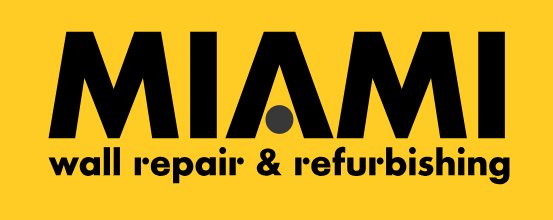When to Hire a Professional vs DIY for Drywall Installation After Water Damage in Miami
If you’ve had water damage in Miami or anywhere in South Florida, deciding between DIY drywall installation and hiring a licensed professional can affect safety, code compliance, insurance coverage, and long-term costs. Here’s a Miami-focused guide to help you choose the right path.
Quick Call-to-Action
• Need help now? Call Miami Wall Repair at (305) 699-3538 for same-week service.
When DIY Can Make Sense (Minor, Safe, and Localized)
• Small patches under 2 sq. ft. with no signs of ongoing moisture, mold, or structural issues.
• Cosmetic repairs above the baseboard after leaks are fully resolved and dried to <16% moisture.
• Replacing a single panel in a non-rated interior wall where no wiring/plumbing is affected.
• You have proper PPE, tools, and can match existing textures common in Miami homes (orange peel/knockdown).
When to Hire a Professional in Miami (Recommended in Most Water Events)
• Permits and Code Compliance: Miami-Dade and City of Miami often require permits when replacing significant drywall areas, working in multi-family buildings/condos, or affecting fire-rated assemblies and common elements. A licensed contractor ensures compliance with Florida Building Code (FBC) and Miami-Dade amendments.
• Moisture and Mold Assessment: Pros use moisture meters, infrared, and containment. In our climate, hidden moisture and mold spread fast—professional drying and remediation protocols protect air quality.
• Electrical/Plumbing Involved: If outlets, GFCI/AFCI circuits, or supply/drain lines were impacted, a licensed trade may be required. Unpermitted work can delay insurance claims and condo approvals.
• Fire-Rated and Shaft Walls: Many Miami high-rises use Type X drywall and specific UL assemblies. These require correct layers, fastener spacing, and joint treatment to pass inspections.
• HOA/Condo Rules: Most associations in Brickell, Downtown, Miami Beach, and Doral require licensed/insured vendors with COI and permits. DIY often violates house rules.
• Insurance and Documentation: Insurers frequently ask for cause-of-loss proof, photos, dry logs, and invoices from licensed contractors. Professional documentation speeds claims and recoveries.
• Finishes and Humidity Resistance: Pros specify mold/moisture-resistant boards (MR/Type X), fiberglass-faced panels, and vapor-smart paints suitable for South Florida humidity and coastal exposure.
Miami/South Florida Best Practices After Water Damage
1) Stop the source and document: Photograph, video, and save receipts; notify your insurer within required timeframes.
2) Dry to standard: Use dehumidification and air movement until readings normalize; remove wet insulation.
3) Cut back to sound material: Typical flood cuts are 12–24 inches above the highest wet mark to the next stud bay.
4) Treat for mold: Apply EPA-registered antimicrobials; consider third-party clearance for significant events.
5) Replace with the right materials: • Bathrooms/kitchens: mold/moisture-resistant drywall or cement board where appropriate • High-rises: match fire-rated assemblies per FBC/UL details • Garages: 5/8" Type X as required.
6) Proper fasteners and spacing: Coated screws for coastal environments, correct spacing (typically 16" OC studs; screws 8"–12" on field/edges).
7) Tape, mud, and texture match: Feather joints wide; match Miami-standard knockdown/orange peel; prime with stain-blocking primer before paint.
8) Final documentation: Keep photos, moisture readings, and invoices for HOA and insurance.
DIY Checklist for Small Repairs
• Confirm no active leaks; moisture at or below acceptable levels.
• Use MR drywall where humidity is high; seal cuts cleanly to studs.
• Wear PPE and contain dust; use shop vac with HEPA and plastic sheeting.
• Use setting-type joint compound for faster, stronger repairs in humid conditions.
• Prime with mold-inhibiting primer; use high-quality interior paint with mildew resistance.
Red Flags—Call a Pro Immediately
• Musty odors, visible mold, or recurring staining.
• Buckling, sagging ceilings, or soft drywall.
• Impacted electrical/plumbing, or walls shared with corridors/units (fire rating).
• Condo/HOA requirements for licensed and insured contractors.
• Insurance claim open or adjuster requests documentation.
Why Choose Miami Wall Repair
• Miami-Dade licensed, insured, and HOA-compliant; we provide COIs and pull permits when required.
• Rapid response across Miami, Miami Beach, Coral Gables, Doral, Kendall, and Aventura.
• Moisture mapping, proper materials for South Florida climate, and texture/paint matching.
• Insurance-friendly documentation and photos to streamline your claim.
Free Estimate and Fast Scheduling
Call (305) 699-3538 or request service online. We’ll assess damage, advise on DIY vs professional, and provide a clear, code-compliant plan for your Miami property.
SEO: Miami drywall installation after water damage, Miami-Dade drywall repair, South Florida mold-resistant drywall, Miami condo drywall permits, Miami water damage wall repair, drywall contractor Miami 305 699 3538.

